(i) 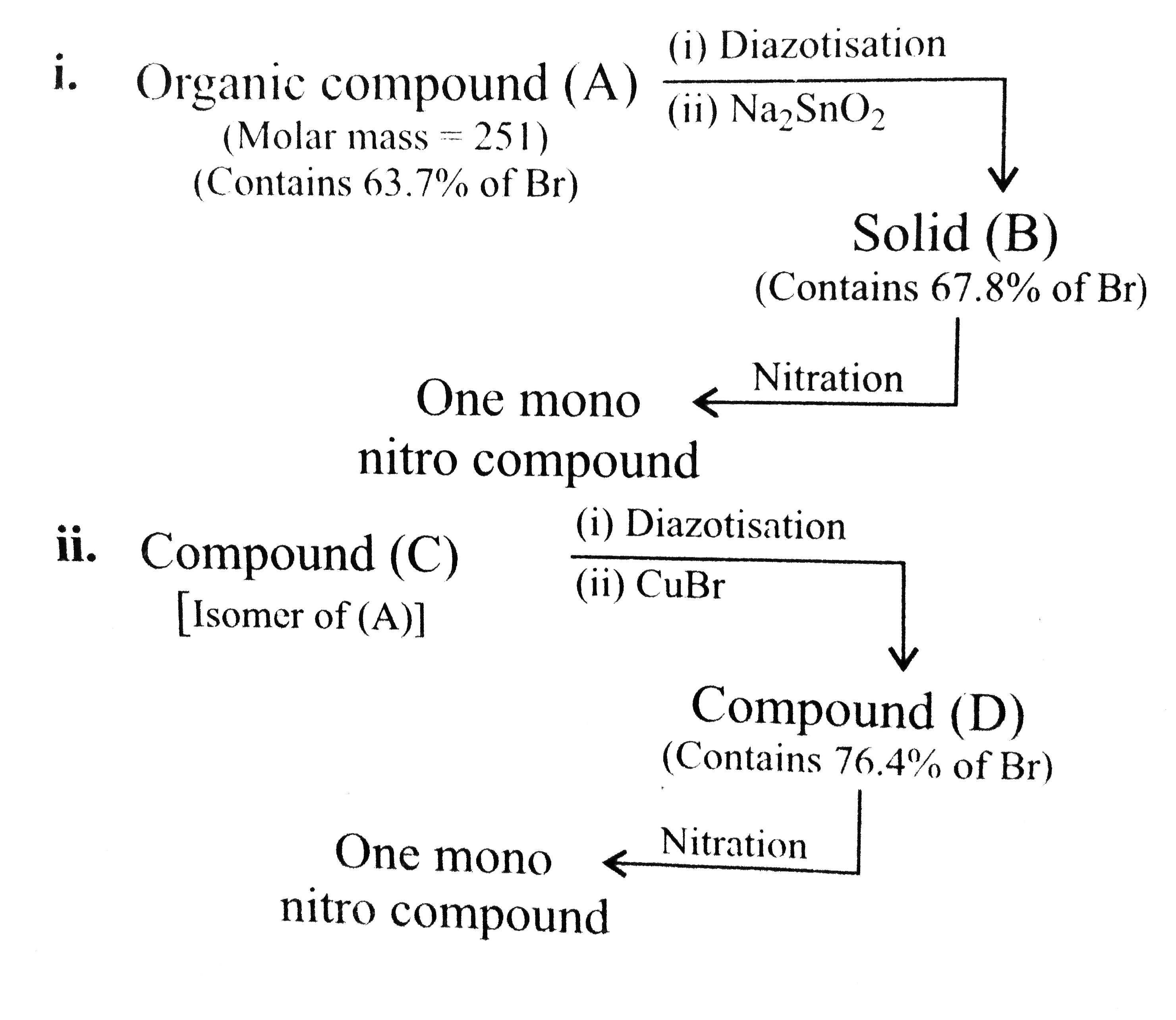
Compound(A)is:
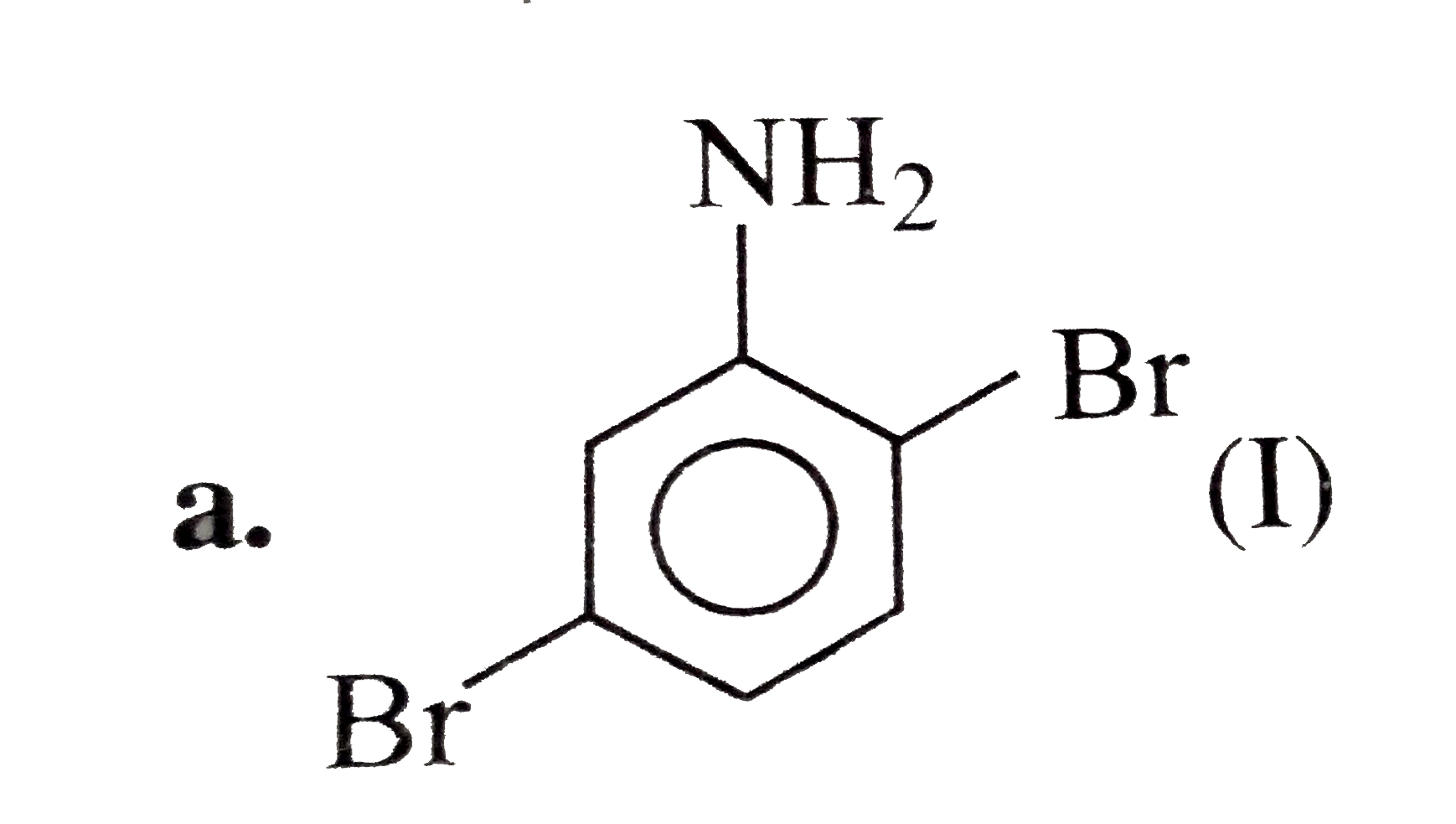
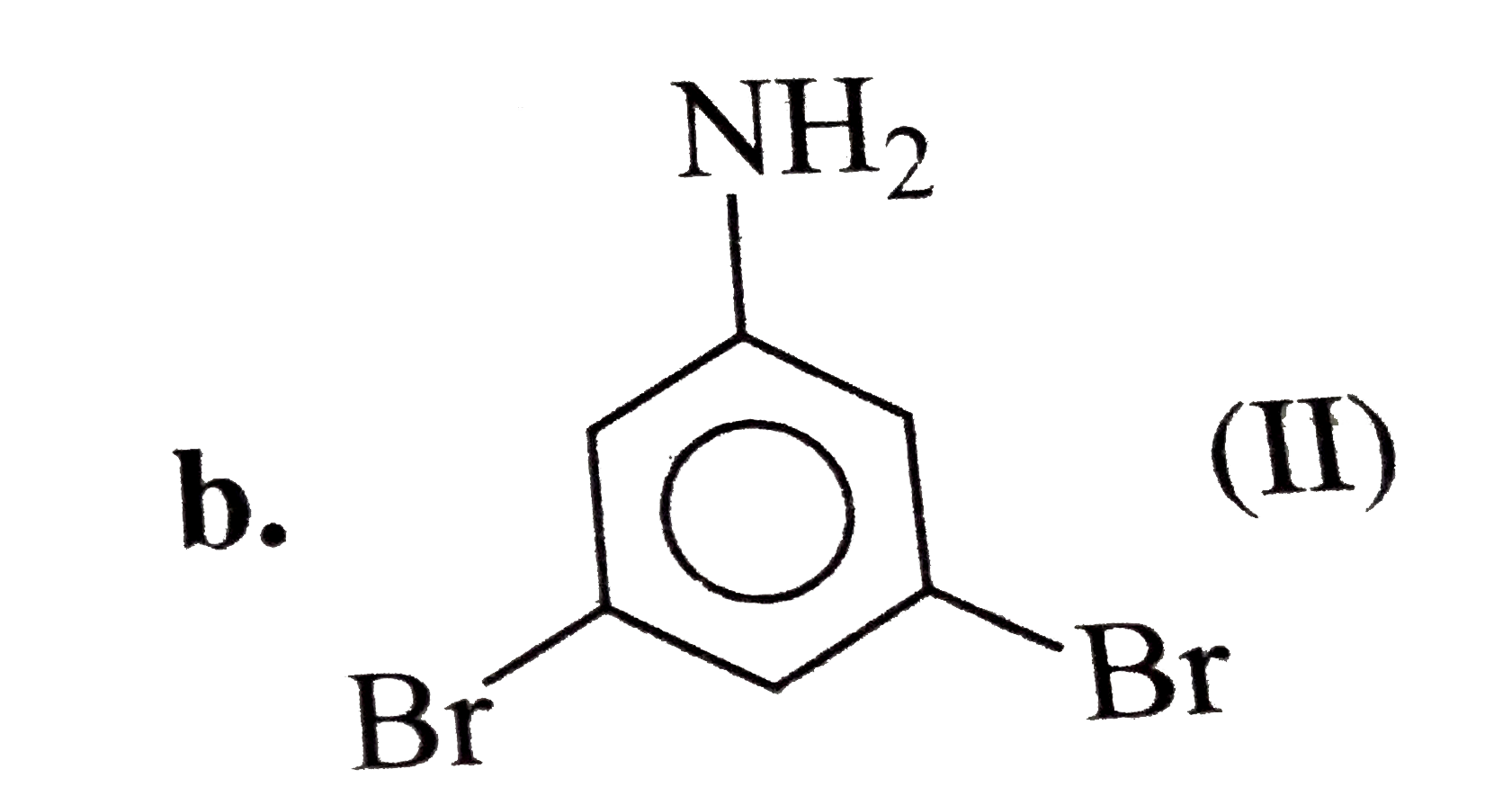
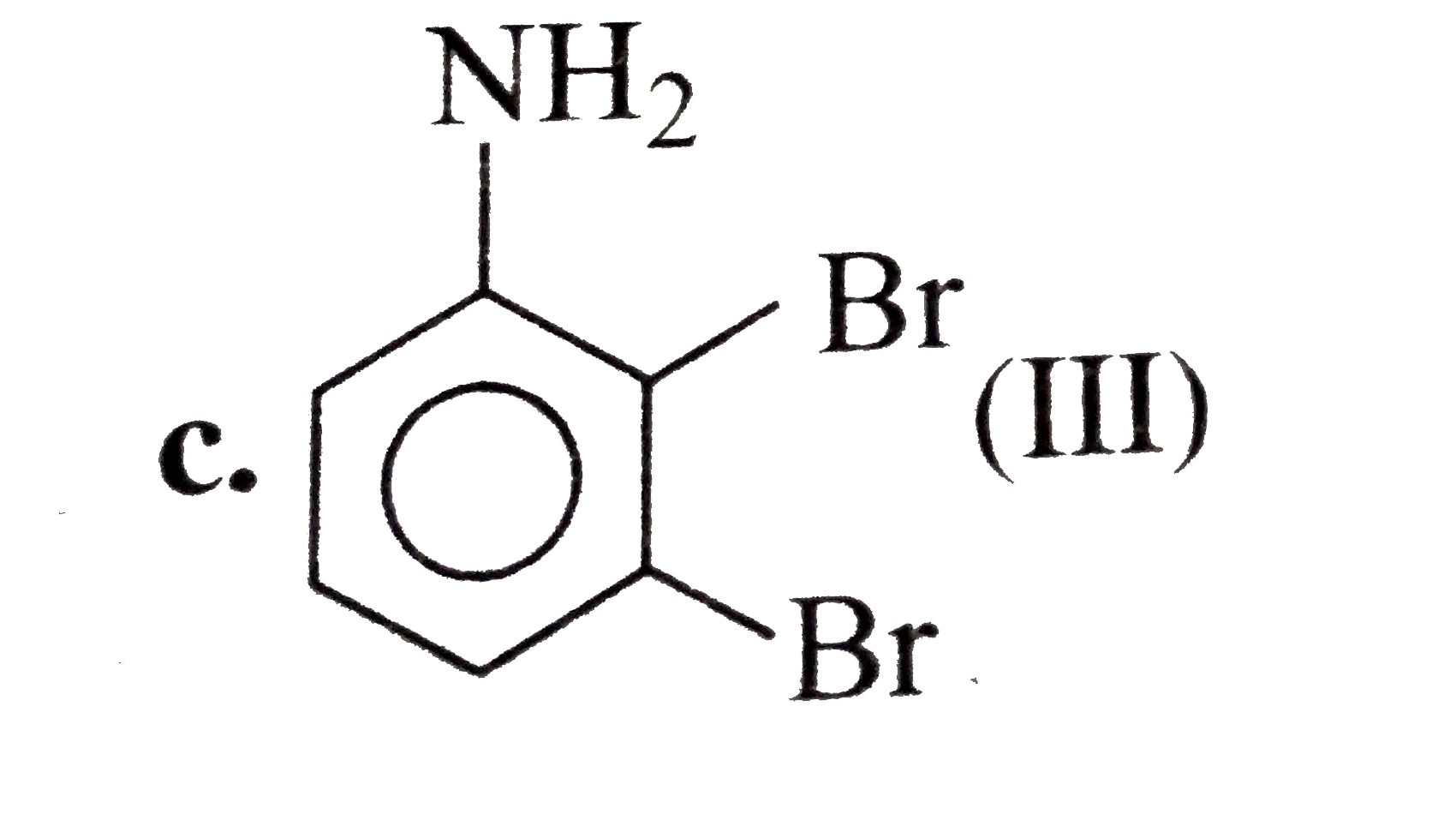
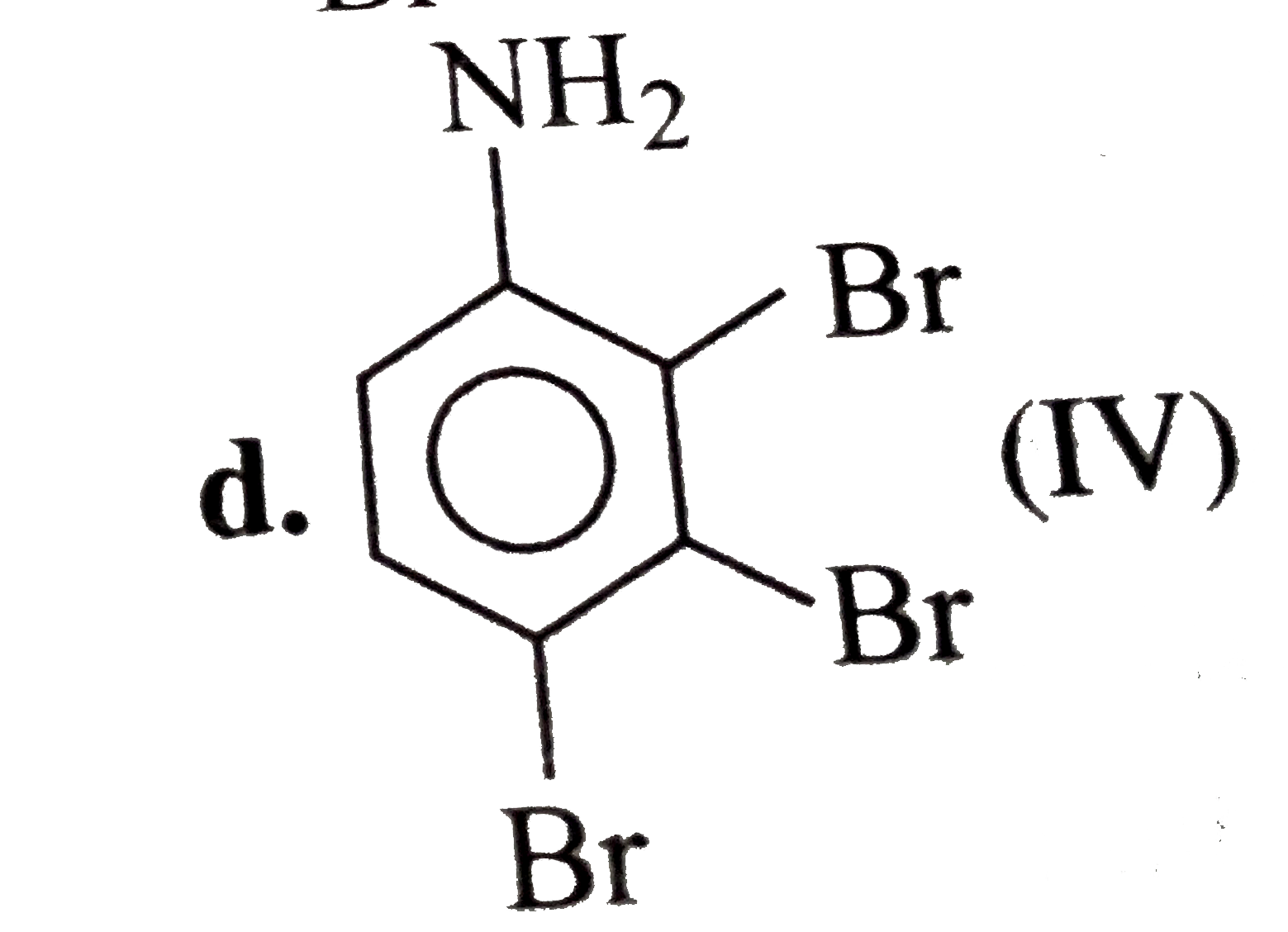
a. In compound(A), the (−NH2)group is removed and from the percentage of(Br) in(A) ,it is suggested that two(Br)groups are present in(A).The formation of one mono-nitro derivation from(B)suggests that two(Br)grops are present at para -position (OMP=231) .
So compound (A) is 
In compolund C , the (−NH2) group inremoved and one more (Br) group is introduced in (C ) , this suggests that compound (D)ocntaisn three (Br ) group, which is confirmed from the percentage of Br in (D).
The formation of one mon-nitro derivative from (D) suggests that three Br groups are present at symetrical jposition is (D)(AUS=231).
So Comoud (D) is <br>Reations:<br><imga≤ocr_imageload∈g=lazysrc=https://d10lpgp6xz60nq.cloudfront.net/physics_images/KSV_CHM_ORG_P2_C15_E01_036_S02.pngwh=80%mx-autosty≤=background:white;><br> (##KSV_CHM_ORG_P2_C15_E01_036_S03.png" width="80%">.
Colculation fo mumber of Br in (A) , (B) and (D) In (A) : 100 gm of compound contains =63.gmofBr
251gm of compound contins =63.7×251100gm
of Br=63.7×251100x780mol of Br=99=2molBr.
Br=63.7×251100x80mol of Br=1.99≈2molBr.
In (B) : molar mass of (B) (C6H4Br2_)=236gm
Moles of Br in (B)=67.80×236100×80=2molBr
In (D : ) Molar mass of (D) (C6H3Br3)=315gm
Moles of Br in (D)=76.4×315100×80=3molBr.
Topper's Solved these Questions
- ORGANIC COMPOUNDS WITH FUNCTIONAL GROUPBOOK - CENGAGE CHEMISTRYCHAPTER - ORGANIC COMPOUNDS WITH FUNCTIONAL GROUPEXERCISE - Exercises Multiple Correct
20 Videos
- ORGANIC COMPOUNDS WITH FUNCTIONAL GROUPBOOK - CENGAGE CHEMISTRYCHAPTER - ORGANIC COMPOUNDS WITH FUNCTIONAL GROUPEXERCISE - Exercises Single Correct
54 Videos
- ORGANIC COMPOUNDS WITH FUNCTIONAL GROUPBOOK - CENGAGE CHEMISTRYCHAPTER - ORGANIC COMPOUNDS WITH FUNCTIONAL GROUPEXERCISE - Exercises Concept Application
13 Videos
- NUCLEAR CHEMISTRYBOOK - CENGAGE CHEMISTRYCHAPTER - NUCLEAR CHEMISTRYEXERCISE - Archives Subjective
13 Videos
- P-BLOCK GROUP 15 ELEMENTS - THE NITROGEN FAMILYBOOK - CENGAGE CHEMISTRYCHAPTER - P-BLOCK GROUP 15 ELEMENTS - THE NITROGEN FAMILYEXERCISE - Exercises Archives (Subjective)
28 Videos
Similar Questions
Knowledge Check
 . Compounds is : C. Compound ( C) is : A
. Compounds is : C. Compound ( C) is : A B
B C
C D
D
Compound (A) is heated with KCN produces butyronitrile. The compound (A) is
An-propyl alcoholBn-butyl chlorideCn-propyl chlorideDn-propyl amineAn aqueous solution of compound A gives ethane or electrolysis. The compound A is :
AEthyl acetateBSodium acetateCSodium propionateDSodium ethoxide.
Compound 'A' is prepared by oxidation of compound 'B' with alkaline KMnO4. Compound 'A' on reduction with lithium aluminium hydride gets converted back to compound 'B'. When compound 'A' is heated with compound 'B' in the presence of H2SO4, it produces fruity smell of compound 'C'. To which family, the compounds 'A', 'B' and 'C' belong to ?
View SolutionCompound 'A' is prepared by oxidation of compound 'B' with alkaline KMnO4. Compound 'A' on reduction with lithium aluminium hydride gets converted back to compound 'B'. When compound 'A' is heated with compound 'B' in the presence of H2SO4, it produces fruity smell of compound 'C'. To which family, the compounds 'A', 'B' and 'C' belong to ?
View SolutionSodium chloride is a compound is common salt a compound? Justify.
View SolutionWhich of the following compound(s) is/are aromatic compounds ?

View SolutionThe compound on dehydrogenation gives a ketone. The original compound is :
View Solution
